Computerized Tomography (CT) Scan
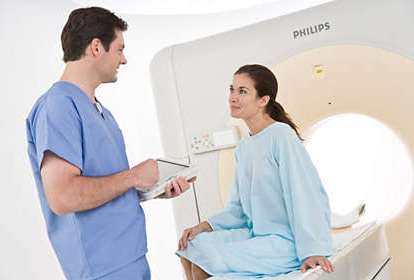
A computerized tomography (CT) scan combines a series of X-ray images taken from different angles around your body and uses computer processing to create cross-sectional images (slices) of the bones, blood vessels and soft tissues inside your body. CT scan images provide more-detailed information than plain X-rays do.
A CT scan has many uses, but it's particularly well-suited to quickly examine people who may have internal injuries from car accidents or other types of trauma. A CT scan can be used to visualize nearly all parts of the body and is used to diagnose disease or injury as well as to plan medical, surgical or radiation treatment.
Your doctor may recommend a CT scan to help:
- Diagnose muscle and bone disorders, such as bone tumors and fractures
- Pinpoint the location of a tumor, infection or blood clot
- Guide procedures such as surgery, biopsy and radiation therapy
- Detect and monitor diseases and conditions such as cancer, heart disease, lung nodules and liver masses
- Monitor the effectiveness of certain treatments, such as cancer treatment
- Detect internal injuries and internal bleeding
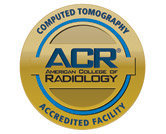
Hours and appointments
Good Samaritan Hospital, first floor
255 Lafayette Avenue, Suffern, NY 10901
Open Monday through Friday, 7 a.m. to 7 p.m. -- Providing after work appointments for your convenience
Appointments also available Saturday, 8 a.m. to 2 p.m
(Emergency CTs available 24/7 in our Emergency Room).
For appointments and insurance inquiries: 866.596.8456
Philips CT Big Bore System
New Advanced CT System Enhances Accuracy of Radiation Therapy and Offers Superior Image Quality and the Industry’s Largest True Field-of-View

The CT Big Bore Difference:
When planning radiation therapy for cancer patients, it is critical to accurately target the tumor and spare healthy tissue. In order to achieve this, a CT simulation with excellent image quality and complete visibility of patient anatomy is required.
The CT Big Bore’s large opening allows for more movement and flexibility, in turn, the therapists can capture the images and information needed to accurately prescribe advanced techniques like IMRT and arc treatments.
In addition to ensuring precise positioning, the system is equipped with high-speed imaging software that allows technicians to cover larger areas in the fastest amount of time. The advanced imaging tool kit reduces the time it takes for scanned images to be reconstructed, which leads to faster evaluation and treatment. The technology also makes it possible for clinicians to “mark” an area for treatment and then initiate therapy via one workstation.
The Phillips CT Big Bore’s superior image quality and large field-of-view help improve treatment plans by accurately identifying the target treatment area and improving patient safety by ensuring healthy tissue is spared unnecessary radiation. The device features a large true scan area for full anatomic visualization and it provides fast positioning accuracy between the imaging area and the laser marking area which gives us complete confidence in patient marking and treatment targeting.
The design and features also allow doctors to accommodate bariatric patients. They can comfortably and safely treat all patients while obtaining high-quality images regardless of the patient’s size or position.
FAQs for CTs
What is a CT scan? 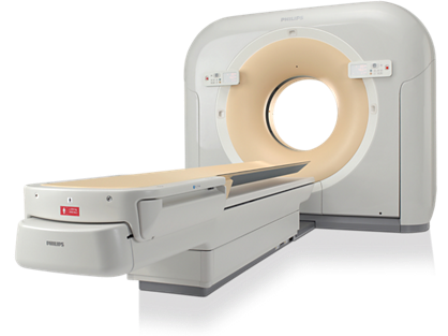
A CT scan — also called Computerized Tomography or just CT—is an X-ray technique that produces images of your body that visualize internal structures in cross section rather than the overlapping images typically produced by conventional X-ray exams. CT scans use an X-ray unit that rotates around your body and a powerful computer. The result with CT scans is a set of cross-sectional images, like slices, of the inside of your body.
How do I prepare for a CT scan?
How you prepare for a CT scan depends on which part of your body is being scanned. You may be asked to remove your clothing and wear a hospital gown. You’ll need to remove any metal objects, such as jewelry, that might interfere with image results. Some CT scans require you to drink a contrast liquid before the scan or have contrast injected into a vein in your arm during the scan. A contrast medium blocks X-rays and appears white on images, which can help emphasize blood vessels, bowel or other structures. If your test involves a contrast medium, your doctor may ask you to fast for a few hours before the test.
Can I take my medicine before a CT scan?
Yes, please take medicines before the CT scan, with the exception of diabetic medicines. If you are over 65, or if you have diabetes or renal disease, you may need to have a BUN/Creatinine blood test first. For some procedures, you can’t eat past midnight prior to the procedure. Please inform us of all medical concerns and we’ll give you specific instructions when you schedule with us.
How long will it take to do a CT scan?
Expect the exam to last no longer than an hour, depending on the preparation needed and whether it includes the use of a contrast medium. The scan itself may take less than a minute on the newest machines. Most scans take just a few minutes to complete.
Will the radiation that I receive from the CT scan hurt me?
CT scans are similar to those of conventional X-rays. During the CT scan, you’re briefly exposed to radiation. But doctors and other scientists believe that CT scans provide enough valuable information to outweigh the associated risks.
What will I experience during and after the procedure?
During the CT scan, you lie on a narrow table that slides through the opening of the gantry. You may lie on your back, side or stomach, depending on the area to be scanned. The table can be raised or lowered. Straps and pillows may help you stay in position. During a CT scan of the head, the table may be fitted with a special cradle that holds your head still. CT scans are painless. If your exam involves use of an intravenous contrast medium, you may feel a brief sensation of heat or experience a metallic taste in your mouth. After the exam you can return to your normal routine. If you were given a contrast medium, your doctor, a nurse or the CT technologist performing the scan may give you special instructions. You may be asked to wait for a short time in the radiology department to ensure that you feel well after the exam. After the scan, you’ll likely be told to drink lots of fluids to help your kidneys remove the medium from your body.
Will I need someone to drive for me after the CT scan?
No, the CT scan is a safe test that will not affect your ability to drive.
How and when will I get my results?
CT images are stored as electronic data files and usually reviewed on a computer. A radiologist interprets these images and sends a report to your doctor.
What if I’m pregnant?
When scheduling your appointment, you must alert us if you are pregnant, or even if you think you may be pregnant.
What if I have allergies?
Please be sure to inform the scheduler as certain allergies may require you to be pre-medicated.
Spectral CT
The new Spectral CT system captures inpatient scans quickly with enhanced clarity, for improved disease identification. This “Detector-Based” Spectral CT is always on, which provides routine spectral imaging without an increase in radiation dose. It takes seconds to complete a full chest-abdomen-pelvis scan and head and chest scan.
All patients are accommodated, including pediatric and bariatric.
Good Samaritan Hospital strives to make the imaging experience pleasant for each patient. To help accomplish this, the upgraded Radiology Department now features ambient lighting and acoustic noise reduction as well as voice guidance and calming visuals for a more relaxing sensory experience. The ambient experience cove lighting can reduce patient stress and anxiety. The expanded space also includes four ambient patient bays, six dressing rooms with handicapped access and seven lockers.
This advanced imaging technology is unique to Rockland, Orange and Bergen Counties.
|
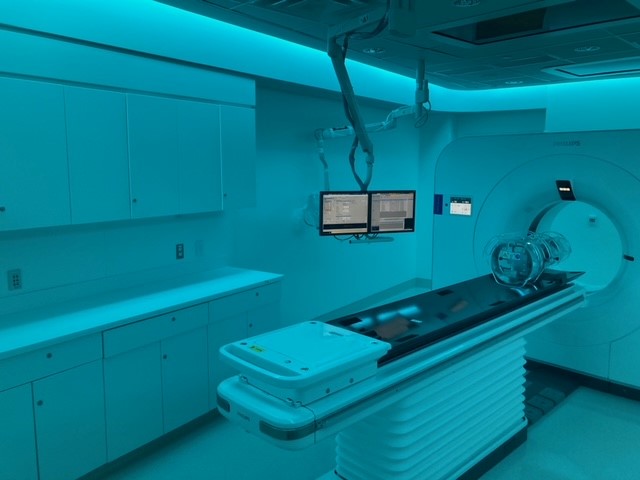
New Spectral CT
|
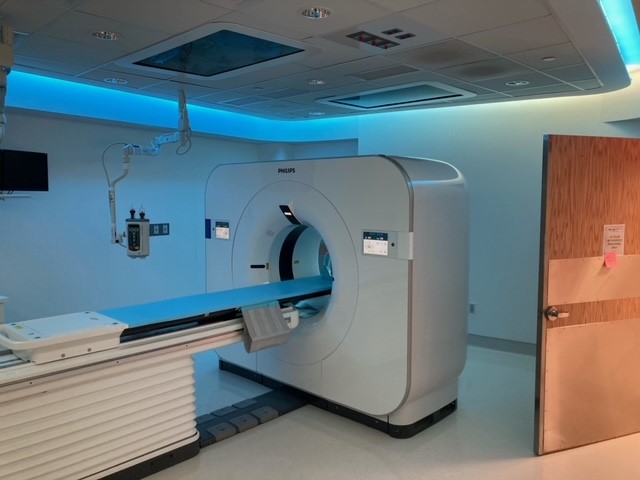
New Spectral CT |
|
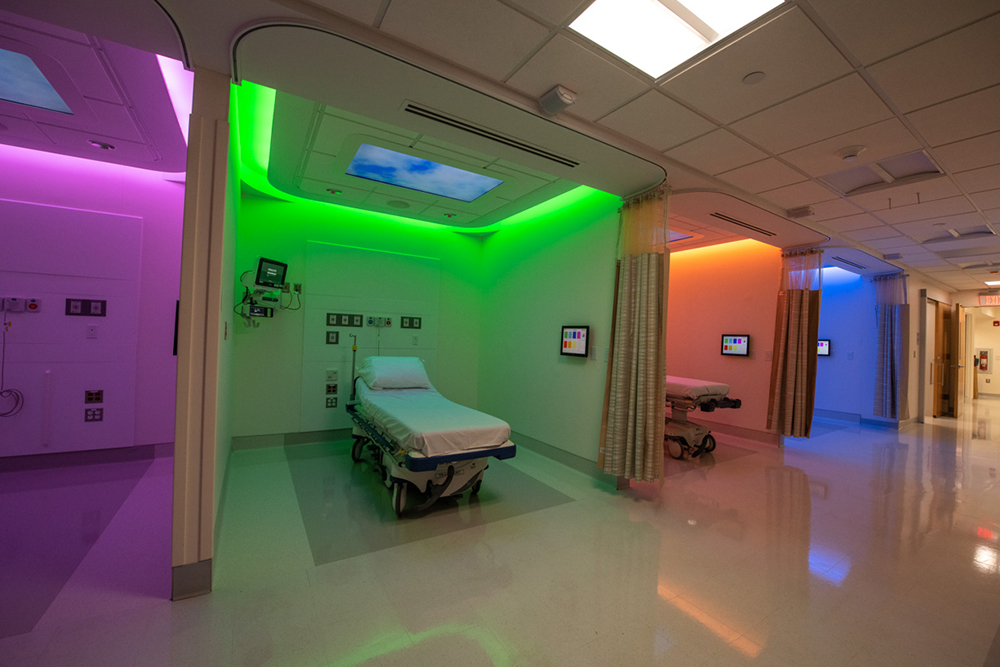
Patient Bay
|
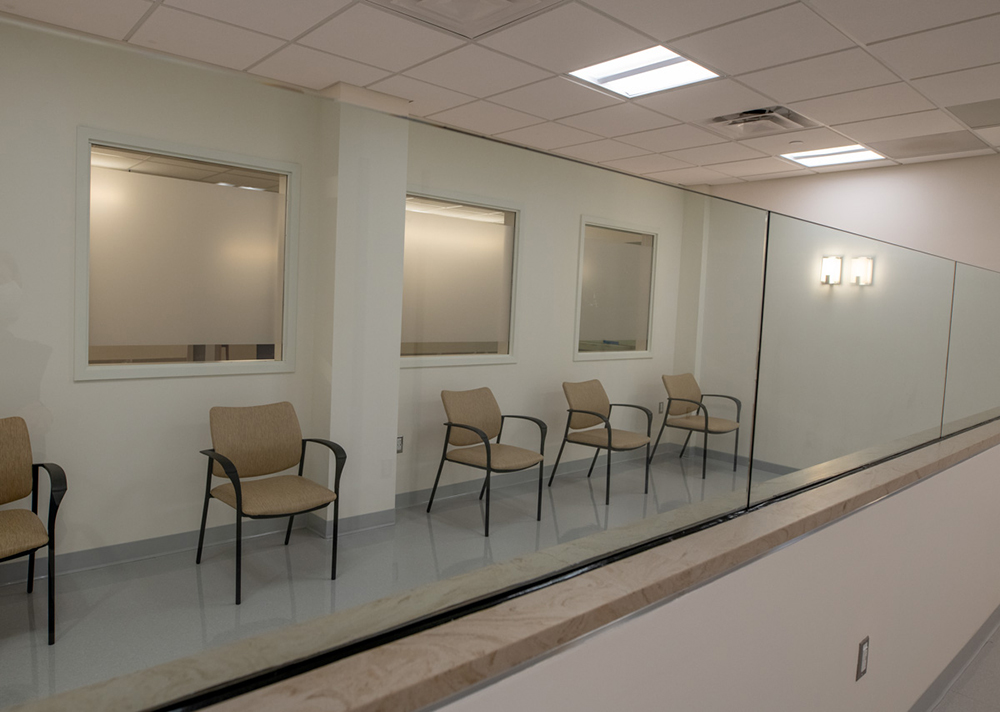
Waiting Room
|